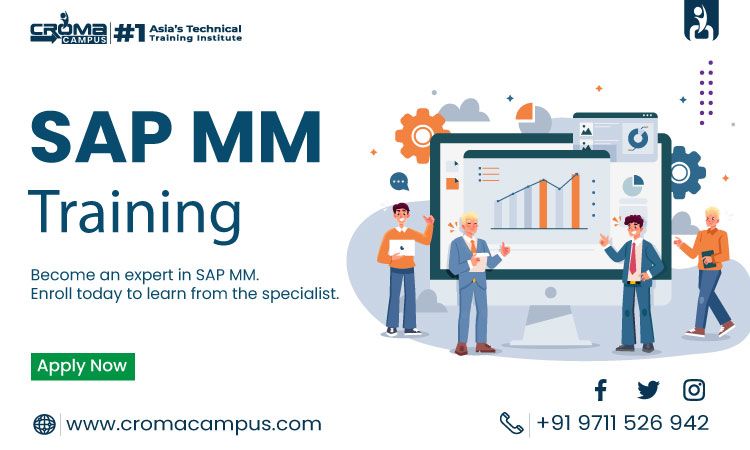
How Sap Mm Works With Other Sap Module?

Introduction
Every ERP software supports all business processes with its different modules. It helps each other to gain better visibility of analytics and in turn, eases the entire cycle of operations of each module’s process. SAP from the ERP world is providing unique business solutions crafted for your business’s needs. Of all its different modules, SAP MM is one significant module from SAP. It also plays a crucial role in managing the material management balance of the organization. SAP Material Management Course can help you better learn its features and functions. Let us first start by understanding, what is SAP MM.
What is Material Management?
SAP MM works to support the Logistics and Supply chain operations of an organization. Moreover, its main goal is to control processes, look after inventory, purchase, and receive items, store materials, and even consumption-based planning. The management of commercial operations like procurement, storage, transportation, and delivery of items along the supply chain comes under logistics. A supply chain is a group of businesses that generally work together to sell, deliver, and produce a specific product.
The supply chain mainly depends on three flows that comprise the Material Management (SAP MM) module.
Material Flow
The transport of materials from the supplier to your business and lastly to the client is known as a material flow. This series further includes customer returns of goods. Companies today go beyond by integrating with their suppliers and consumers. However, merely interacting with them is no longer sufficient. Process enhancements that boost material flow transparency make your business adaptable and responsive while dealing with clients. Thus, a business becomes flexible, quick, and reliable. And lastly adds an advantage over competing businesses if it is additionally more responsive to its clients.
Financial Flow
The financial paperwork comes under financial flow. A credit or debit movement across accounts reflects a material’s value. Moving materials from inventory accounts to another account payable is one example of this process.
Informational Flow
Information flow generally deals with sending orders and keeping track of all deliveries is essential. The use of real-time information in businesses to improve visibility through their clients and suppliers. This further is an additional opportunity for competitive advantage.
Different Modules integration with SAP MM
The SAP MM component works with other SAP components like Production Planning (PP), Sales and Distribution (SD), Quality Management (QM), Plant Maintenance (PM), Finance (FI), Controlling (CO), and Asset Management (AM). It plays a significant role in a manufacturer’s supply chain. Let us understand its integration with other modules.
SAP MM with PP module – Since SAP MM looks after material acquisition based on production requirements, it connects with the PP module. It integrates with MRPs, receipts, as well issuing materials by production orders.
SAP MM with SD module – The SAP SD module integrates with the MM module with its information on material creation. It further helps in the creation of a Sales Order or even passing the order quantity for production. It also links with other sectors like delivery, stock transfer requirements, availability checks, and more.
SAP MM with WM module - As it stores data on internal material storage and transport, the SAP WM module works with the MM module.
SAP MM with FICO module - The FI module connects to the MM module for goods receipt or invoice receipt, influencing the organization’s financial operations. It relates to areas like material valuation, vendor payment, material costing, and more.
SAP MM with QM Module – The SAP MM module integrates with the QM module to send the material information to the quality control team to balance the quality criteria.
SAP MM with PM module - The maintenance order looks after the material or service requirements. This results in the development of PR. MM further changes this PR into a PO. A PO’s products deliver to Maintenance by MM.
Main Functionalities of SAP MM module
Materials planning can be useful in determining what materials are essential.
On the basis of your previous orders and active longer-term purchase agreements, the purchasing component helps in the identification of potential supplier sources.
To help in creating a purchase order, the purchasing system brings information from the requisition and the bid.
Conclusion
SAP MM mainly assists a continuous flow of activities from the very beginning of the production process to the very end. It is however very important to fully understand the different aspects of the system and how they operate. You can go through SAP MM Training in Gurgaon to better understand its functions.
Appreciate the creator